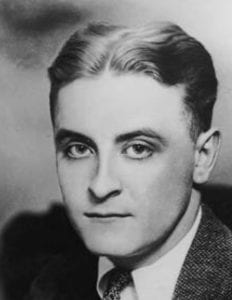 The Great Gatsby is now recognised as a masterpiece. But, F. Scott Fitzgerald (left) never saw his book become a success. In fact, at his untimely death at the age of 44, he had earned a grand total of $13.13 in royalties. When it was published in 1925, Gatsby sold a disappointing 21,000 copies. And there were reportedly still copies from the second printing in the Scribner warehouse when Fitzgerald died in 1940. It’s shocking how long it took The Great Gatsby to be considered a classic. It wasn’t until April 24, 1960, for example, that The New York Times wrote: “It is probably safe now to say that The Great Gatsby is a classic of twentieth-century American fiction.”
The Great Gatsby is now recognised as a masterpiece. But, F. Scott Fitzgerald (left) never saw his book become a success. In fact, at his untimely death at the age of 44, he had earned a grand total of $13.13 in royalties. When it was published in 1925, Gatsby sold a disappointing 21,000 copies. And there were reportedly still copies from the second printing in the Scribner warehouse when Fitzgerald died in 1940. It’s shocking how long it took The Great Gatsby to be considered a classic. It wasn’t until April 24, 1960, for example, that The New York Times wrote: “It is probably safe now to say that The Great Gatsby is a classic of twentieth-century American fiction.”
Fitzgerald
Exotic Locations for 3 WISE MEN
Readers of 3 WISE MEN will find themselves immersed in exotic locations. Most are centered on the Mediterranean. The French Riviera follows a beautiful section of the northern Mediterranean coastline. Côte d’Azur was the name given to this exotic coast by the writer Stéphen Liégeard in his book, La Côte d’azur, published in December 1887, and the name has stuck-and even become synonymous with ritzy vacation hotels for the rich and famous. What a perfect location to contrast the tension building in our protagonist’s life when he is captured-literally- by the Riviera’s charms.
[“Forgive me. I forgot to introduce myself. My name is Sasha.”
Jak responded, impressed by the softness of her red lambskin gloves and engaging smile.
“I’m Jak.”
“Pleased to meet you. Were you staying in Antibes?” she enquired.
“I was just there for the day.”
“Did you enjoy it?”
“Oh, it’s charming I guess.” But his thoughts fled elsewhere, searching for answers. His head slumped to read the unfolded note in his hand.
…
“I love Antibes,” she continued. “With its rich history, it’s been a favorite place for many well-known people.”
Jak nodded and raised his eyes to view the lights now sparkling along the coast. The horizon had vanished into a cobalt-gray shroud. Night was closing in and he sought solitude.
…
“What was a scientist like you doing in old Antibes?” she asked. “The town has been more popular with artists than scientists.”
“Really?”
She nodded. “Antibes was the social whirlpool for many famous writers, including Hemingway and Fitzgerald. They gravitated together at the popular Hôtel du Cap-Eden Roc—an idyllic location on the coast to help calm their personal differences and give them literary inspiration.”]
